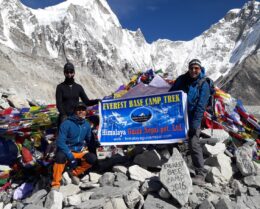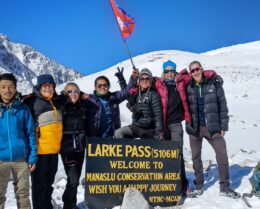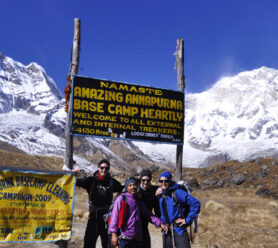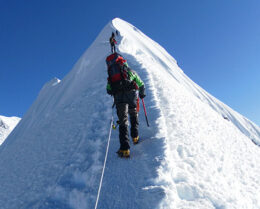Best time for Island Peak climbing: the Ultimate Himalayan Peak Adventure
PUBLISHED ON 23 March, 2023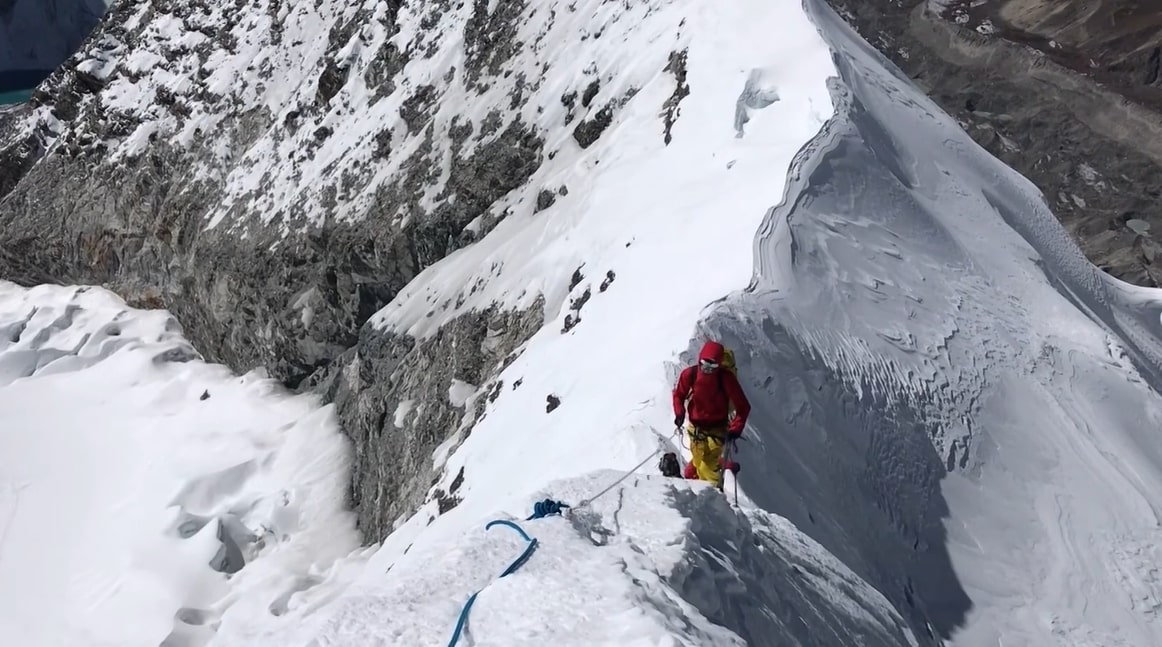
Island Peak, also known as Imja Tse, is a popular trekking peak in the Everest region of Nepal. Standing at an impressive 6,189 meters (20,305 feet) above sea level, Island Peak climbing offers a wonderful experience that combines trekking, mountaineering, and stunning Himalayan scenery. You can find the best time for Island Peak climbing with our comprehensive guide in this blog.
This blog will take you through everything you need to know about climbing Island Peak, from its location and trekking routes to high altitude and weather conditions.

Island Peak is a trekking peak. It can be climbed by trekkers with no prior mountaineering experience. However, Island Peak is still a high-altitude climb and requires a certain level of physical fitness and acclimatization. It is essential to undergo proper training and preparation before attempting to climb Island Peak.
Location and Trekking Route
Island Peak lies in the Everest region of Nepal. The trek to its base camp is one of the most popular treks in the world. The trek starts from Lukla, a small town in the SoluKhumbu district of Nepal. Similarly, it takes trekkers through Namche Bazaar, Tengboche, Dingboche, and Chukhung before reaching the Island Peak Base Camp.
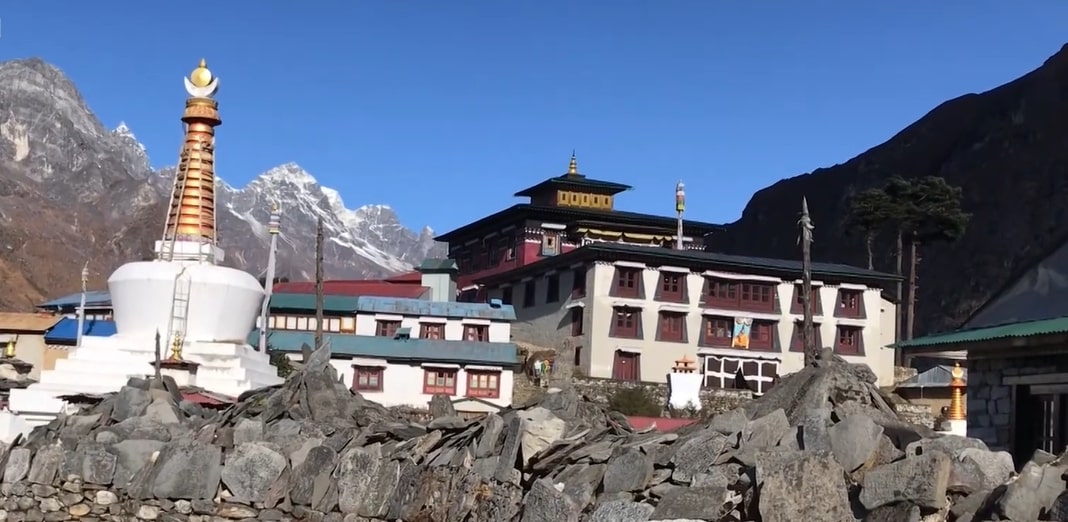
The trek to Island Peak Base Camp follows the same route as the Everest Base Camp Trek until Dingboche. From Dingboche, trekkers take a detour towards Chukhung. It is a small village at an altitude of 4,730 meters (15,518 feet) above sea level.
From Chukhung, trekkers continue their journey toward Island Peak Base Camp. It lies at an altitude of 5,200 meters (17,060 feet) above sea level.
Best time for Island Peak climbing
The trek to Island Peak Base Camp takes around 10 to 15 days, depending on the trekker’s pace and acclimatization. Along the way, trekkers will stay in tea houses or lodges, which offer basic accommodation and meals. Tea houses are small, family-run guest houses that are scattered throughout the trekking route. They provide a comfortable place to sleep, warm meals, and a chance to interact with locals.
Discover the best time for Island Peak climbing with our comprehensive guide. Island Peak is a popular climbing destination in the Khumbu region of Nepal. It offers stunning views of the Himalayas and a challenging climbing experience. The best time to climb Island Peak largely depends on the prevailing weather conditions in the region.
Spring (March to May) and Autumn (September to November) are the most popular times for Island Peak climbing. These seasons offer stable weather conditions with clear skies and mild temperatures. However, winter (December to February) can also be a great time for climbing, with clear skies and fewer crowds.
Summer (June to August) is generally not recommended for Island Peak climbing due to the heavy rainfall and high chances of avalanches and landslides.
Make the most out of your Island Peak climbing experience by choosing the best time to climb. Whether you are a seasoned climber or a first-timer, our guide will help you plan your climb and enjoy the breathtaking views of the Himalayas.
High Altitude and Acclimatization
Island Peak is a high-altitude climb, and climbers need to be well-acclimatized to avoid altitude sickness. Altitude sickness can affect anyone, regardless of their physical fitness level or experience. It is caused by the reduced availability of oxygen at high altitudes. Symptoms can range from mild headaches to dangerous conditions such as high-altitude pulmonary edema (HAPE) and high-altitude cerebral edema (HACE).
To avoid altitude sickness, climbers need to acclimatize properly. Acclimatization involves gradually exposing the body to higher altitudes and allowing it to adapt to reduced oxygen levels.
The trek to Island Peak Base Camp allows for proper acclimatization. Trekkers will spend several days at higher altitudes. This will allow their bodies to adjust to the reduced oxygen levels before attempting to climb Island Peak.
Weather Conditions
Weather conditions in the Everest region can be uncertain, and climbers need to be prepared for all eventualities. The climbing season for Island Peak is from March to May and from October to November. During these months, the weather is generally dry and stable, with clear skies and moderate temperatures. However, the weather can change quickly, and climbers need to be prepared for sudden changes in temperature, high winds, and snowfall.
During the climbing season, temperatures at Island Peak Base Camp can range from -10°C to 5°C (14°F to 41°F) during the day and can drop as low as -20°C (-4°F) at night. On the summit day, temperatures can drop as low as -25°C (-13°F). Climbers need to be well-equipped to withstand the cold.
Climbing Equipment
Climbing Island Peak requires certain equipment to ensure safety and success. Some of the essential equipment for climbing Island Peak includes:
- Ice Axe: An ice axe provides stability while climbing and for self-arrest in case of a fall.
- Crampons: Crampons are spikes that are attached to the boots to provide traction on icy surfaces.
- Harness: A harness is used to attach the climber to the rope while climbing.
- Rope: Climbers need to use a rope for safety while climbing. It is recommended to use a 50-meter-long rope for Island Peak.
- Sleep bag: A good quality sleeping bag is essential for staying warm and comfortable during the nights spent at higher altitudes.
- Trekking poles: Trekking poles provide stability and reduce the strain on the knees and legs while trekking.
High Camp and Summit Day
After reaching the Island Peak Base Camp, climbers will spend a few days at the base camp to acclimatize and undergo training on the use of climbing equipment. Climbers will then trek to the high camp.
It lies at an altitude of 5,600 meters (18,373 feet) above sea level. The high camp is the starting point for the summit push. Climbers need to spend a night at the high camp before attempting the summit.
The hardest and most satisfying day of the journey is summit day. Climbers will start early in the morning, around 1 or 2 am, to reach the summit before noon. The climb to the summit involves climbing on a steep ridge and crossing a glacier. Climbers need to have climbing gear and be ready for the cold temperatures.
Reaching the Summit of Island Peak
Reaching the summit of Island Peak is a wonderful experience and a major achievement for any climber. From the summit, climbers can enjoy panoramic views of some of the highest mountains in the world, including Everest, Lhotse, Nuptse, and Ama Dablam. Climbers will spend some time on the summit to take photos and enjoy the views before descending back to the high camp.
After descending from the high camp, climbers will trek back to Chukhung and continue their journey to Lukla. They can catch a flight back to Kathmandu.
Island Peak climbing is an adventure for anyone looking for a challenging and rewarding mountaineering experience. In addition to trekking, it offers a unique combination of climbing opportunities. Moreover, it allows climbers to enjoy the stunning beauty of the Everest region throughout the ascent. With proper training, preparation, and equipment, climbers can safely reach the summit of Island Peak and come back with a lifetime of memories.
Others in the Everest Area Trek and Climb
The Everest region is home to several other treks and climbs that are popular among adventure seekers. Some of the other treks and climbs in the Everest region include:
Everest Base Camp Trek
The Everest Base Camp Trek is a popular trek that takes trekkers to the base camp of the world’s highest mountain. The trek takes about 12-14 days and offers stunning views of the Himalayas.
Ama Dablam Expedition
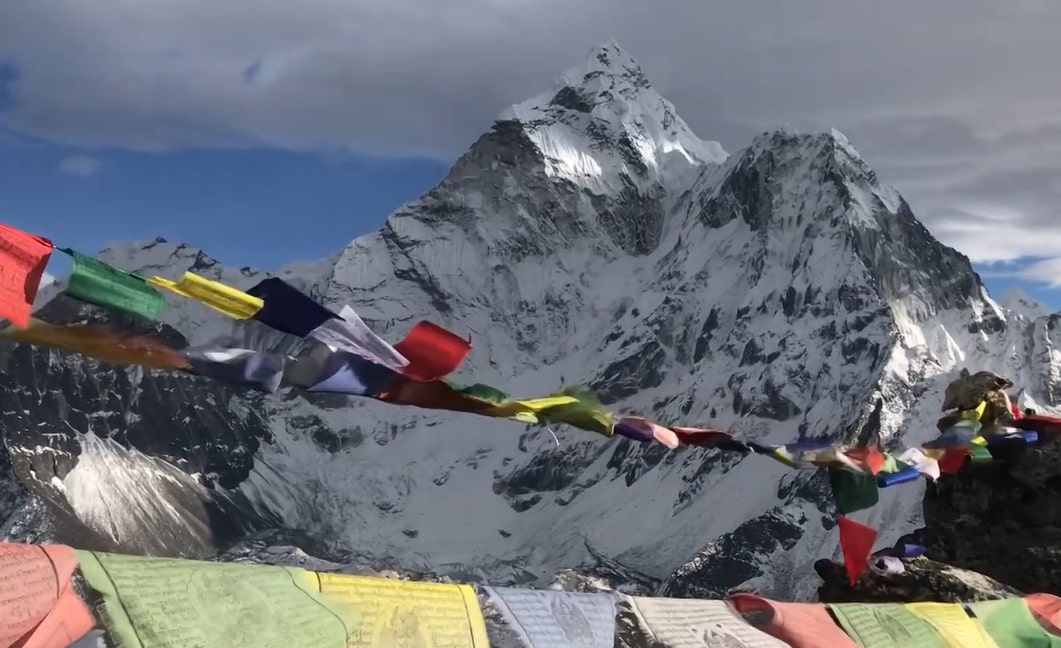
Ama Dablam is a stunning peak in the Everest region. It is famous for being difficult to climb because of its difficult mountains. Only experienced climbers with the necessary technical climbing ability should attempt the summit of the Ama Dablam Expedition.
Lobuche Peak Climbing
Lobuche Peak is another popular peak located in the Everest region and offers a challenging climb for experienced climbers. The climb to the summit of Lobuche Peak involves crossing glaciers and steep ridges. It offers stunning views of the surrounding Himalayas.
Gokyo Lakes Trek
The Gokyo Lakes Trek is a scenic trek that takes trekkers to the beautiful Gokyo Lakes. The trek offers stunning views of the Himalayas and is a great alternative to the crowded Everest Base Camp Trek.
FAQs
What is Island Peak Climbing?
Island Peak, also known as Imja Tse, is a peak located in the Everest region of Nepal. It is a popular peak for climbers who are looking to summit a Himalayan peak without requiring extensive technical climbing experience. Island Peak Climbing involves trekking to the base camp of Island Peak and then summiting the peak with the help of an experienced guide.
What degree of difficulty does climbing Island Peak require?
Island Peak Climbing is a moderate to challenging climb, depending on your level of experience and fitness. The peak stands at 6,189 meters, which makes it a high-altitude climb. However, the climb does not require extensive technical climbing skills, and it is suitable for those with basic mountaineering experience.
What is the best time for Island Peak Climbing?
The best time to climb Island Peak is during the pre-monsoon season (March to May) and post-monsoon season (September to November).
During these times, the weather is generally stable and the skies are clear, which makes for good climbing conditions. However, it’s important to note that weather conditions can change quickly in the mountains. So it’s always best to check with your guide before embarking on the climb.
Do I require a license to ascend Island Peak?
Yes, you will need a climbing permit to climb Island Peak. The permit can be obtained through the Nepal Mountaineering Association (NMA). In addition, you will also need a trekking permit to enter the Everest region.
Do I need any prior climbing experience to climb Island Peak?
While prior mountaineering experience is not required, it is recommended that climbers have some experience trekking at high altitudes. It’s also important to have a good level of physical fitness and stamina as the climb can be strenuous. You will be accompanied by an experienced guide who will provide you with the necessary support and guidance throughout the climb.
Conclusion
Island Peak climbing is a challenging and rewarding adventure. It offers a unique combination of trekking and climbing in the beautiful Everest region. Climbing Island Peak requires proper training, preparation, and equipment. However, with the right mindset and guidance, anyone can reach the summit and come back with a lifetime of memories.
The Everest region offers several other treks and climbs that are popular among adventure seekers and offer stunning views of the Himalayas. If you’re looking for an adventure that will challenge you both physically and mentally and allow you to immerse yourself in the stunning beauty of the Himalayas, Island Peak climbing is a highly recommended option.

